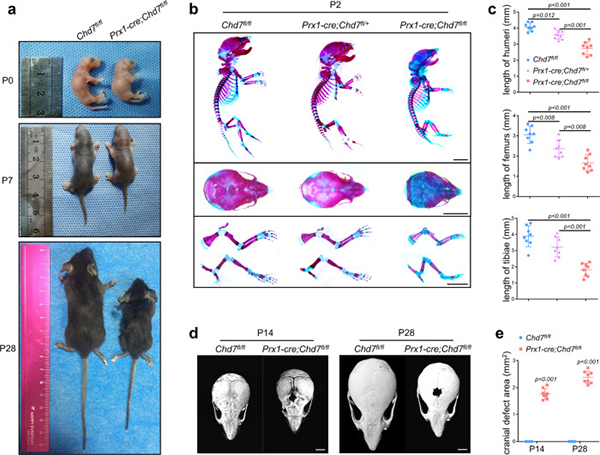Team of Professor Ping Gong made great discoveries in CHD7’s function in skeletal system

Deletion of Chd7 in MSCs leads to skeletal development disorder.
Mutation of CHD7 can cause developmental disorder involving multiple organ system defects, but CHD7’s function and mechanism in skeletal system is fairly defined. The team of professor Ping Gong discovered that conditional knockout of CHD7 in bone marrow MSCs activates the PPAR signaling pathway, which will promote the MSC differentiation balance toward adipogenesis, leading to whole body developmental disorders of the skeletal system, low bone mass, and high marrow adipose tissue. Their research was published in the journal Nature Communications.
Researchers found that CHD7-deficient MSCs have reduced osteogenic potential yet intensified adipogenic potential, which leads to these three major manifestations. In terms of the mechanism, they unraveled that loss of Chd7 activates the transcription of downstream adipogenic genes by upregulating PPAP-γ, which associates with trimethylated histone H3 at lysine 4 (H3K4me3). Besides, data shows that PPAR antagonist can partially rescue the phenotype of Chd7-deficient MSCs and the skeletal phenotype of the mice model.
Such findings might reveal the pivotal regulatory role of CHD7 in bone development and diseases as well as an epigenetic mechanism in skeletal health and provide insight into a probable clinical therapeutic strategy.
Doctoral student Caojie Liu from the class of 2020 in WSCC is the first author of this article. Professor Ping Gong and associate chief physician Ning Kang are joint corresponding authors. West China School/Hospital of Stomatology, Sichuan University is the only accomplishment unit for this article.
For more details, please click the link below.




